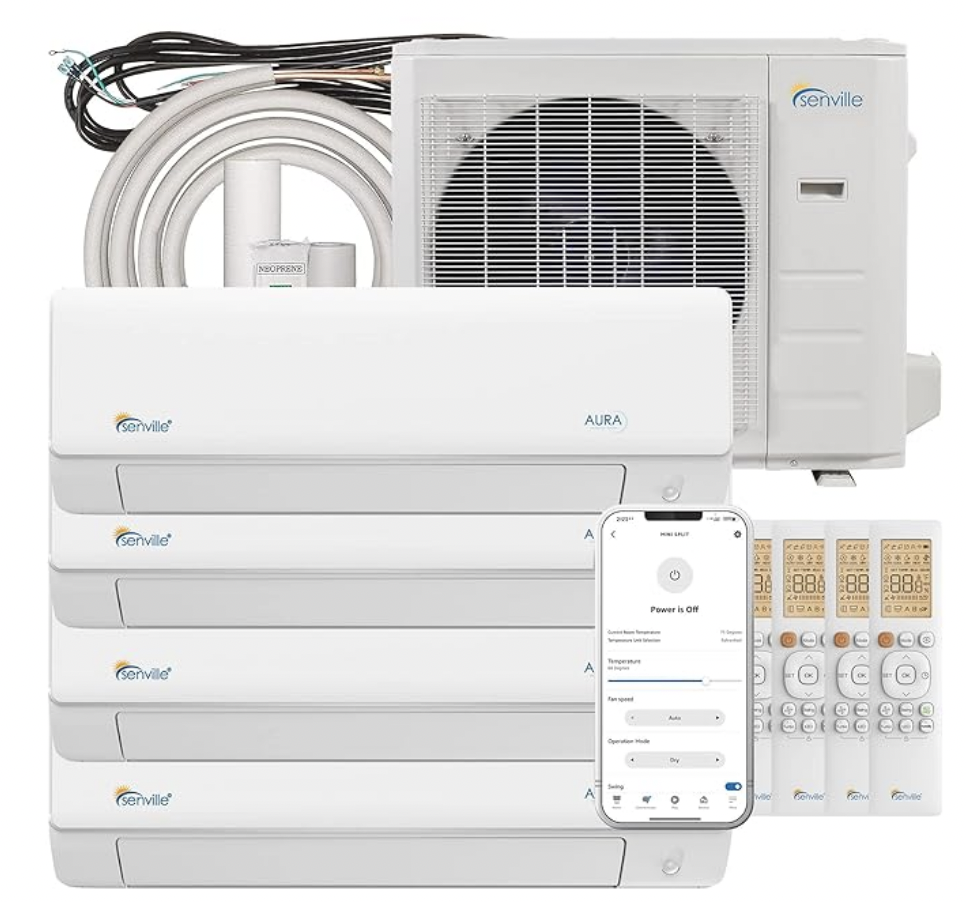Maintaining the motor on your Senville inverter is crucial for ensuring its optimal performance and longevity. Proper lubrication is a key aspect of this maintenance, as it helps to reduce friction, minimize wear and tear, and prevent premature failure. In this comprehensive guide, we’ll walk you through the step-by-step process of lubricating the motor on your Senville inverter, providing you with the technical details and expert insights to ensure a successful and efficient DIY experience.
Preparing for the Lubrication Process
Before you begin the lubrication process, it’s essential to ensure that the unit is properly powered down and secured. This will prevent any potential safety hazards and ensure that you can work on the motor without interruption.
Turning Off the Power
- Locate the circuit breaker that supplies power to your Senville inverter.
- Flip the circuit breaker to the “off” position, cutting off the power to the unit.
- Verify that the power is indeed turned off by checking the control panel or any indicator lights on the unit.
Accessing the Motor
- Locate the indoor unit of your Senville inverter and remove the cover.
- Typically, the cover is secured with screws on the back and sides of the unit.
- Carefully remove the screws and lift the cover off, exposing the internal components.
- Identify the location of the motor within the indoor unit.
- The motor is usually situated near the blower wheel, which is responsible for circulating the air.
- In some cases, the motor may be covered by a plastic shroud or housing.
Lubricating the Motor

Now that you have access to the motor, it’s time to begin the lubrication process. Follow these steps carefully to ensure that the motor is properly lubricated and protected.
Identifying the Lubrication Points
- Carefully inspect the motor shaft and look for any designated lubrication points.
- These points are typically marked with a small amount of grease or oil, indicating where the lubricant should be applied.
- If there are no visible lubrication points, refer to the manufacturer’s instructions or consult with a professional for guidance.
- Determine the type and amount of lubricant required for your Senville inverter’s motor.
- Consult the manufacturer’s recommendations or refer to the unit’s documentation to ensure you use the correct lubricant.
- Generally, a high-quality, non-conductive lubricant, such as a silicone-based or lithium-based grease, is recommended.
Applying the Lubricant
- Prepare the necessary tools and materials:
- A small syringe or a narrow-tipped brush
- The appropriate lubricant for your Senville inverter’s motor
- Carefully apply a small amount of lubricant to the designated lubrication points on the motor shaft.
- Use the syringe or brush to apply the lubricant, taking care not to over-lubricate the motor.
- Over-lubrication can lead to issues such as leaks, contamination, and even damage to the motor.
- Distribute the lubricant evenly along the motor shaft, ensuring that all the lubrication points are covered.
Reassembling the Unit
- Once you have completed the lubrication process, carefully replace the plastic shroud or housing (if applicable) over the motor.
- Reinstall the cover of the indoor unit, aligning it properly and securing it with the screws you removed earlier.
- Double-check that all the components are properly reassembled and that the cover is securely in place.
Testing and Monitoring the Lubricated Motor
After completing the lubrication process, it’s essential to test the unit and monitor its performance to ensure that the motor is functioning correctly.
Powering On and Testing the Unit
- Restore power to the Senville inverter by flipping the circuit breaker back to the “on” position.
- Turn on the unit and observe its operation, listening for any unusual noises or vibrations that may indicate an issue with the motor.
- If the unit appears to be functioning normally, allow it to run for a few minutes to ensure that the lubricant has been properly distributed.
Monitoring the Motor’s Performance
- Regularly inspect the motor and listen for any changes in the sound or operation of the unit.
- If you notice any unusual noises, vibrations, or a decrease in the unit’s performance, it may be a sign that the motor requires additional lubrication or maintenance.
- Consult the manufacturer’s recommendations for the recommended lubrication interval and any other maintenance requirements for your Senville inverter’s motor.
By following these detailed steps and adhering to the manufacturer’s guidelines, you can effectively lubricate the motor on your Senville inverter, ensuring its optimal performance and extending its lifespan. Remember, proper maintenance and care are essential for maintaining the efficiency and reliability of your ductless mini-split system.
